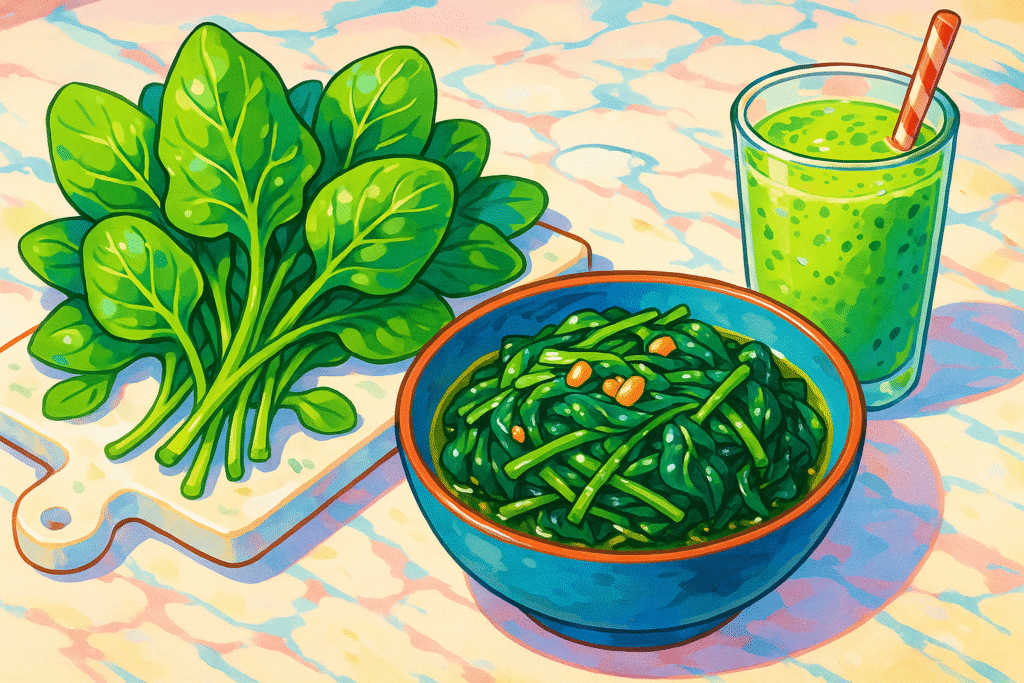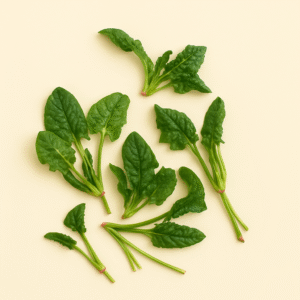Spinach (Spinacia oleracea)

About Spinach
Spinach is a leafy green with soft, dark green leaves and a mild, slightly mineral flavor. Whether raw in salads, cooked in curries, or blitzed into smoothies, it adapts effortlessly to any kitchen.
It’s a foundational ingredient that balances bold spices and adds color, nutrition, and silkiness to dishes.
The History of Spinach
Spinach was first cultivated in Persia (modern-day Iran) and traveled to India and China by the 7th century. It reached Europe in the 11th century via Arab trade routes and became a staple in Mediterranean cooking.
Catherine de’ Medici was such a fan she brought it to France — giving rise to the term “à la Florentine” in dishes that include spinach.
The Science of Spinach
Spinach is packed with iron, vitamin K, magnesium, folate, and calcium — though its oxalate content can reduce mineral absorption when raw.
It also contains lutein, zeaxanthin, and chlorophyll, which support eye and skin health.
The Geography of Spinach
Spinach prefers cool weather and is grown worldwide — especially in China (the largest producer), the U.S., and Europe.
In Indian cooking, it forms the base of palak paneer. In Italy, it’s essential in ravioli and lasagna. In Japan, it’s served as blanched ohitashi with soy and sesame.
Varieties of Spinach
Bloomsdale
 Crinkled heirloom leaves. Excellent flavor, best cooked.
Crinkled heirloom leaves. Excellent flavor, best cooked.
Baby Spinach
Tender and mild. Perfect raw in salads or smoothies.
Tyee
Smooth-leaf variety. Bolt-resistant and ideal for year-round growth.
Red Veined
Vibrant color contrast. Decorative and flavorful.
Malabar Spinach (technically not true spinach)
A vining plant with fleshy leaves. Used in tropical cuisines.
FAQs All your questions about Spinach: answered
Can you eat spinach raw?
Yes — baby spinach is perfect raw. Mature leaves are better cooked to reduce oxalates.
Is spinach really high in iron?
It is, but the body absorbs it best when paired with vitamin C (like lemon juice).
Does spinach lose nutrients when cooked?
Some water-soluble vitamins reduce with boiling, but sautéing or steaming preserves most nutrients.
How do you store fresh spinach?
Keep in a breathable bag with a paper towel in the fridge. Use quickly — it wilts fast.